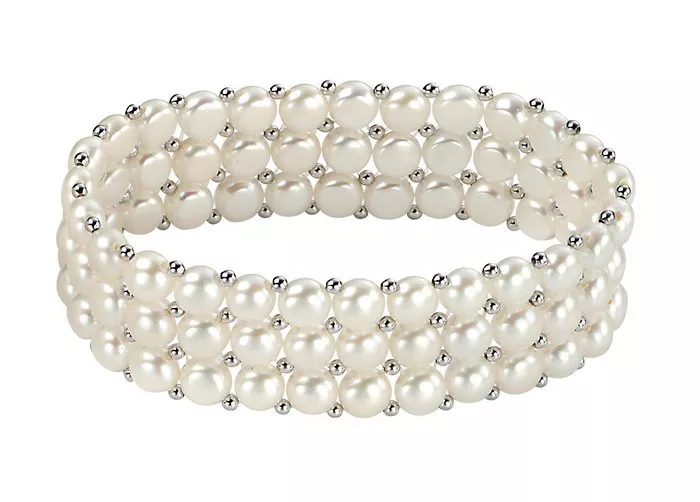Pearls have captivated humanity for centuries with their timeless elegance and natural allure. From ancient civilizations to modern-day fashionistas, pearls have adorned royalty, graced runways, and symbolized sophistication. Yet, not all pearls are created equal. Some are prized treasures, commanding exorbitant prices, while others may hold little value beyond sentimental worth. So, how can one discern the true value of pearls? In this comprehensive guide, we delve into the intricate world of pearls, exploring their types, characteristics, and the key factors that determine their worth.
Understanding Pearl Types
Before delving into their value, it’s essential to understand the different types of pearls. Primarily, pearls can be categorized into natural pearls and cultured pearls.
1. Natural Pearls: These are formed entirely by chance, without any human intervention. Natural pearls are exceedingly rare, as they occur when an irritant, such as a grain of sand, enters an oyster or mollusk. Over time, the mollusk secretes layers of nacre around the irritant, resulting in the formation of a pearl. Due to their scarcity, natural pearls are highly valued and command premium prices in the market.
2. Cultured Pearls: Unlike natural pearls, cultured pearls are cultivated with human intervention. Cultured pearls are created through a process called pearl culturing, wherein a skilled technician implants a nucleus, typically a bead or a piece of mantle tissue, into the mollusk. The mollusk then secretes layers of nacre over the nucleus, gradually forming a pearl. Cultured pearls are more abundant than natural pearls and come in various types, including Akoya, Tahitian, South Sea, and freshwater pearls.
Assessing Pearl Value: Key Factors
Several factors influence the value of pearls, ranging from their size and shape to their luster and surface quality. By understanding these key factors, one can better evaluate the worth of pearls.
1. Luster: Luster refers to the shine or glow emanating from the surface of a pearl. High-quality pearls exhibit a deep, mirror-like luster, which results from the reflection and refraction of light through the layers of nacre. Pearls with superior luster appear luminous and radiant, adding to their allure and value.
2. Surface Quality: The surface of a pearl should ideally be smooth and free from blemishes or imperfections. While minor surface irregularities are common and acceptable, pearls with significant flaws or damage may have reduced value. Buyers should inspect pearls carefully under good lighting to assess their surface quality.
3. Size: The size of a pearl is another critical factor in determining its value. Generally, larger pearls command higher prices, as they require more time for the mollusk to cultivate and are rarer in nature. However, size preferences can vary depending on cultural trends and individual tastes.
4. Shape: Pearls come in various shapes, including round, near-round, oval, button, drop, and baroque. Round pearls are the most desirable and valuable due to their symmetrical shape and uniformity. Other shapes, such as baroque pearls, which have irregular or non-spherical shapes, may still hold value depending on their uniqueness and appeal.
5. Color: Pearls exhibit a wide range of colors, including white, cream, pink, silver, gold, black, and more. The most valuable pearls often possess a natural, subtle hue that complements their luster and enhances their beauty. However, colored pearls, such as black Tahitian pearls or golden South Sea pearls, can also be highly prized for their rarity and distinctiveness.
6. Origin: The origin of pearls can significantly impact their value and desirability. Certain regions are renowned for producing pearls of exceptional quality, such as the waters of Japan for Akoya pearls, French Polynesia for Tahitian pearls, and Australia for South Sea pearls. Pearls sourced from these regions often command premium prices due to their reputation for excellence.
Professional Evaluation and Certification
For those seeking a professional assessment of pearl value, certified gemologists and reputable jewelers can provide expert guidance. These professionals possess the knowledge and expertise to evaluate pearls based on industry standards and criteria. Additionally, pearls can be certified by recognized organizations, such as the Gemological Institute of America (GIA) or the International Gemological Institute (IGI), which further validates their quality and authenticity.
Conclusion
In the world of pearls, value is not solely determined by price tags but by a combination of factors, including luster, surface quality, size, shape, color, and origin. By understanding these key elements and conducting thorough evaluations, enthusiasts and collectors can make informed decisions when purchasing or investing in pearls. Whether it’s a string of classic white pearls or a rare black Tahitian treasure, the timeless beauty and allure of pearls continue to enchant and captivate generations, making them truly priceless treasures.
FAQs
How can I assess the luster of pearls?
Luster refers to the shine or glow emanating from the surface of a pearl. To assess luster, examine the pearl under good lighting conditions. High-quality pearls exhibit a deep, mirror-like luster that reflects and refracts light effectively, creating a luminous appearance.
What should I look for when evaluating the surface quality of pearls?
When assessing surface quality, look for smooth surfaces free from blemishes, spots, or irregularities. While minor surface imperfections are common and acceptable, significant flaws or damage may affect the value of pearls.
Are larger pearls always more valuable?
Generally, larger pearls command higher prices due to their rarity and the additional time required for cultivation. However, personal preferences, cultural trends, and the specific type of pearl can also influence perceived value. Some collectors may prefer smaller pearls for their delicacy or unique qualities.
What shapes of pearls are considered the most valuable?
Round pearls are traditionally the most desirable and valuable due to their symmetrical shape and uniformity. However, other shapes, such as near-round, oval, or drop-shaped pearls, can also hold significant value depending on their appeal and rarity. Baroque pearls, which have irregular or non-spherical shapes, may be valued for their uniqueness and artistic appeal.

